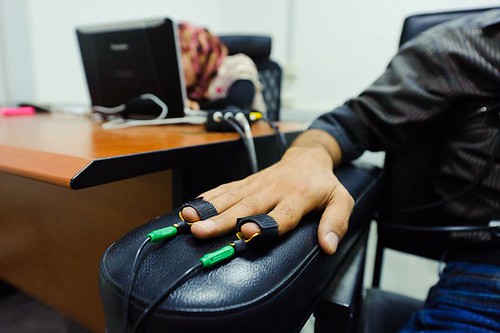The Truth Behind Lie Detectors
This Will Change Your Perspective On the Accuracy of This Mechanism.
Everyone wants to get the truth out of others, but how exactly? Lie detectors are effective, right? Well, they aren’t as reliable as they are thought to be. This article will explain how exactly lie detectors work, the information we can get out of it, and its true accuracy.
To start, “lie detector” is just a label put on polygraphs. Polygraphs can track a number of factors (poly- meaning many), from heart rate, pulse, respiration, breathing rate, perspiration, skin conductivity, galvanic skin response, blood pressure, and many more physiological factors. It may even be able to detect arm and leg movements. Once a person is hooked up to the polygraph machine, the examiner will ask simple, baseline questions to get a sense of the normal signals when telling the truth and when lying. This information will then be shown either on a long slip of paper with needles moving up and down – displaying the changes in the body detected from the sensors (graph- meaning writing) – or on a digital readout. After a couple baseline questions, the examiner alternates between control/target questions – the real questions that are to be tested – and more baseline questions to observe the person’s bodily responses.

When we lie, our bodies have a different, more active response then when calmly telling the truth. On the machine, little reactions are shown by more steady, straighter lines, while big reactions are shown by large jumps. However, there are instances where an individual could have a different, more excited/nervous response, even when telling the honest truth, thus assuming the responses people give when they’re lying. A person may naturally be nervous when interrogated, showing a big reaction on the polygraph. On the other hand, there are instances where people can trick the system and pass the polygraph test, even when lying the entire time.

There are many ways where people can cheat the test, one way being faking a “bigger” response to telling the truth. People can induce pain, such as biting their tongue or thinking of a negative though, when answering the simple questions to assume that the larger responses are lying. Then, when the target questions come around, the response to lying is smaller than the response to telling the truth, the examiner will think that the truth is being told, even though it’s not. Another way to trick the test is to think positive thoughts and staying calmer when lying, in order to calm your body.
So in conclusion, when asking if “lie detectors” are effective, they aren’t. There are many ways to get away with the truth, so it’s more of a test to detect nervousness and if people are uncomfortable. While it’s a great way to track people’s physiological factors, polygraphs aren’t worthy of the name “lie detectors”. Although, as time goes on, there may be more factors to detect that may lead us closer to a better “lie detecting” device.
RELATED STORIES:
https://www.bbc.com/news/world-us-canada-45736631
https://www.britannica.com/story/do-lie-detectors-actually-work
https://www.law.cornell.edu/wex/lie_detector_test
https://people.howstuffworks.com/lie-detector.htm
https://science.howstuffworks.com/question123.htm
TAKE ACTION:
https://www.apa.org/research/action/polygraph
https://interestingengineering.com/the-polygraph-and-how-to-cheat-it















